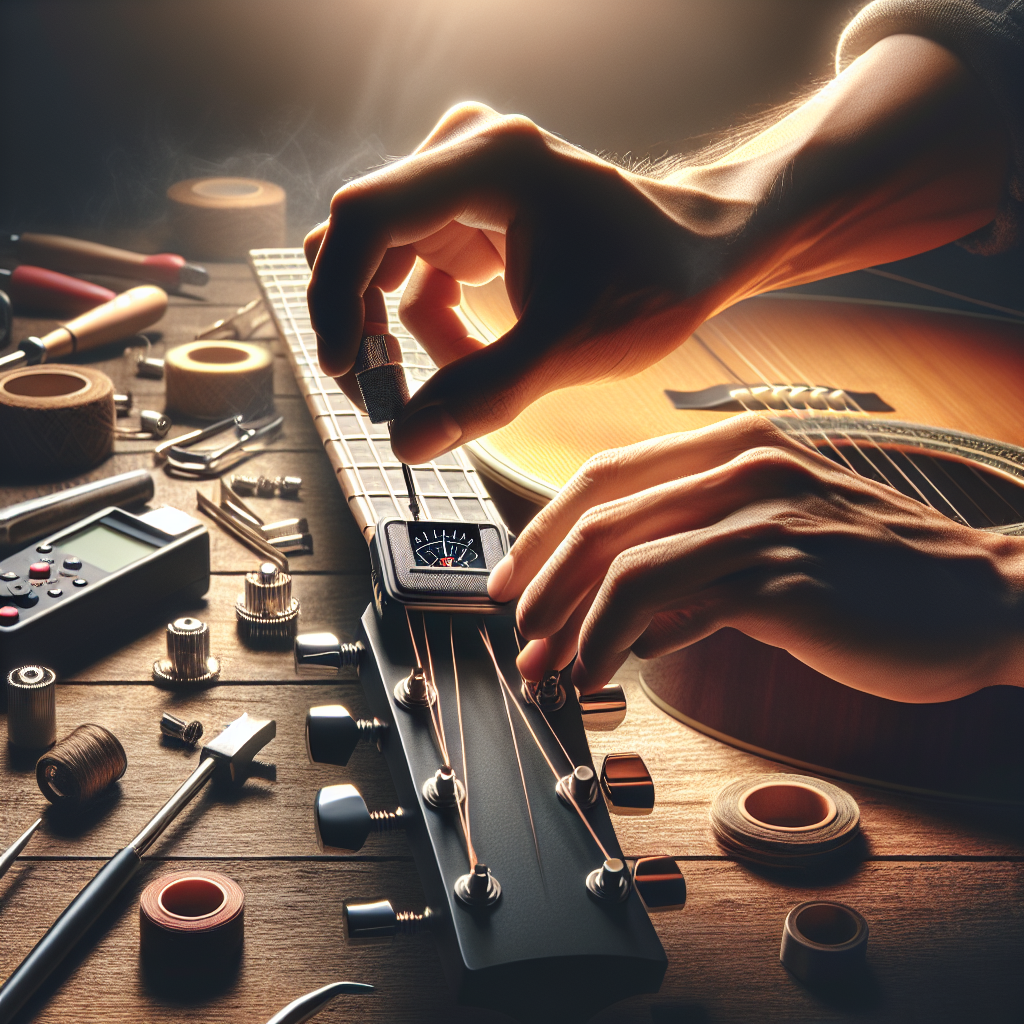
7 Steps to Perfectly Set Guitar Intonation Using a Strobe Tuner
Setting guitar intonation is essential for ensuring your instrument plays in tune across the entire fretboard. While intonation can be tricky, using a strobe tuner can make the process easier and more accurate. In this comprehensive guide, we’ll walk you through the seven steps to correctly set your guitar’s intonation using a strobe tuner.
Why Guitar Intonation Matters
Intonation refers to the accuracy of the pitches produced by your guitar. Poor intonation can result in an out-of-tune sound, even if your open strings are perfectly in tune. Proper intonation ensures that chords and notes sound accurate up and down the neck, making it crucial for all guitarists to periodically check and adjust their guitar’s intonation.
Getting Started: Tools You’ll Need
Before you begin, gather the necessary tools:
- A strobe tuner: The most accurate type of tuner, ideal for setting intonation.
- A screwdriver: For adjusting the saddles on the bridge.
- Your guitar: Make sure it’s in good condition and has been played in with the current strings.
- A guitar pick: For plucking the strings.
Step 1: Tune Your Guitar Strings
Start by tuning your guitar to standard tuning (EADGBE) using your strobe tuner. Ensure each string is perfectly in tune. This serves as your baseline and is crucial for accurately setting intonation.
Step 2: Check Open String and 12th Fret Note
Play the open string and compare it to the note at the 12th fret. On your strobe tuner, both should match perfectly. If not, adjustments are needed.
Step 3: Adjusting the Saddle
If the 12th fret note is sharp compared to the open string, move the saddle back (away from the neck). If it’s flat, move the saddle forward (toward the neck). Each adjustment should be small, allowing you to recheck and fine-tune as needed.
Step 4: Repeat for Each String
Continue this process for each string, ensuring that both the open string and the corresponding 12th fret note are perfectly in tune. This repetition is key for consistent intonation across the guitar.
Step 5: Patience and Precision
Adjustment requires patience and precision. It can be a meticulous process, but rushing it will likely lead to imperfect intonation. Take your time to achieve the best results.
FAQs About Setting Guitar Intonation
- What is a strobe tuner?
A strobe tuner is a device that provides visual feedback to help musicians accurately tune their instruments to perfect pitch. It’s known for its precision compared to other tuners.
- Why is intonation often off?
Intonation can be affected by several factors, including changes in temperature, humidity, string age, and guitar adjustments such as neck relief and action.
- How often should I check my guitar’s intonation?
It’s good practice to check intonation every time you change strings or when the guitar is subjected to significant environmental changes. Regular checks ensure the best possible sound.
- Can I set intonation by ear?
While it’s possible to set intonation by ear, using a strobe tuner provides a significantly higher level of accuracy, which is particularly important for precise musical applications.
- What role does action play in intonation?
Higher action increases the distance the string travels when pressed, which can slightly affect intonation. Adjust action first and then check intonation.
- Do different guitars require different intonation settings?
Yes, factors like scale length and bridge type affect intonation settings, which is why each guitar should be individually set for intonation.
Conclusion: Fine-Tune for Perfect Harmony
Setting your guitar’s intonation is an essential aspect of maintaining its sound quality and playability. With a strobe tuner and a bit of patience, you can ensure that your guitar performs perfectly across the entire fretboard. Once you’ve completed the intonation setup, enjoy playing your guitar with the confidence that every note is perfectly in tune.
For further reading, you might want to explore additional resources on [Guitar World](https://www.guitarworld.com) for more in-depth guidance on guitar maintenance and setup.